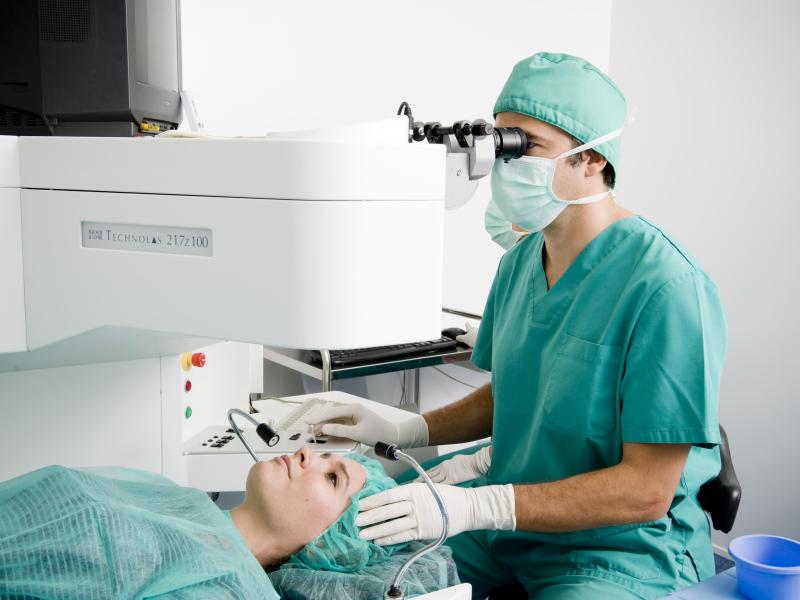Dacryocystitis is an eye infection of the lacrimal gland, which is located in the inner corner of the eye. This condition occurs when the tear duct, which carries tears from the eye to the nose, becomes blocked. This blockage can cause inflammation and pain, as well as a buildup of tears and pus.
Types of dacryocystitis
Depending on the underlying cause, dacryocystitis can be classified into several types. The most common types of dacryocystitis are acute, chronic, and congenital.
Acute Dacryocystitis
Acute dacryocystitis is characterized by a sudden, painful infection of the lower part of the eye near the nose. It is usually caused by a blockage of the lacrymal ducts or a bacterial infection.
This condition causes considerable pain and requires early treatment, not because of its severity, but to avoid possible further complications to the patient's visual health. Within a few hours, it causes inflammation, swelling, rash, and pain. In some cases, there is also discharge, infection of the periocular structures (tissues surrounding the tear sac, such as the eyelids), or even an accumulation of pus from the secretions with the risk of abscess rupture and fistula formation.
Chronic Dacryocystitis
Chronic dacryocystitis is a recurrent infection of the eye, usually due to diseases of the nasal mucosa (rhinitis) with pneumococcus, staphylococcus, and streptococcus or general diseases such as syphilis and tuberculosis. It is characterized by profuse tearing and painless swelling of the lacrimal sac.
Compared to acute dacryocystitis, chronic dacryocystitis often has milder but more recurrent symptoms: constant tearing, discharge, and redness of the eyes caused by chronic bacterial growth. Chronic infection may be acute.
Congenital dacryocystitis
Congenital dacryocystitis occurs in newborns due to a congenital malformation of the nasolacrimal duct. It is characterized by the secretion of mucous tears and, upon pressure, by the leakage of mucopurulent fluid.
Importance of Prompt Treatment of Dacryocystitis
Prompt treatment of dacryocystitis is very important to prevent potentially serious complications such as orbital cellulitis, sinusitis, meningitis, and sepsis.
Treatment of dacryocystitis depends on the severity of the infection and whether complications are present. In mild cases, it can be treated with antibiotics and warm compresses. However, if the infection is more severe or there are complications, surgery may be required to unblock the tear duct and allow normal tear drainage.
In summary, prompt treatment of dacryocystitis is crucial to avoid potentially serious complications and to ensure a quick and effective recovery. If you experience symptoms of dacryocystitis, it is important to see an ophthalmologist or general practitioner immediately.
Treatments for dacryocystitis
Treatment of dacryocystitis depends on the severity of the infection and possible complications. In fact, it may require both medical and/or surgical treatment.
Medical treatments
Once dacryocystitis is diagnosed, effective treatment can begin. Typically, the ophthalmologist will recommend applying warm compresses with a damp cloth to the affected area. Massaging the area around the lacrimal sac may help promote drainage.
If there is a lacrimal duct infection, an oral antibiotic will be prescribed. For chronic dacryocystitis, medication is very helpful to quickly control the acute infection and relieve symptoms.
Surgery may be necessary if the disease recurs and does not respond to antibiotic therapy.
Surgical treatments
If medical treatment fails, or if the infection is severe or recurring. Some common surgical options to treat dacryocystitis include
Tear duct probing
Tear duct probing is a treatment for dacryocystitis that is especially recommended for infections in babies from 9 months to about 3 years of age to treat congenital dacryocystitis.
The procedure involves inserting a fine wire into the nasolacrimal duct to remove any blockage.
Dacryocystorhinostomy (DCR)
Dacryocystorhinostomy (DCR) is the most common surgical procedure used to treat dacryocystitis. It involves creating a new opening between the lacrimal sac and the nasal cavity to bypass the blocked tear duct. This allows normal tear drainage and prevents the accumulation of infected fluid. DCR can be performed with an endoscope inserted through the nose or through a skin incision near the eye.
Dacryocystectomy
In the most severe cases of dacryocystitis, dacryocystectomy may be necessary. This procedure involves the complete removal of the blocked tear sac and lacrymal ducts. It is usually used as a last resort when other treatment options have failed.






